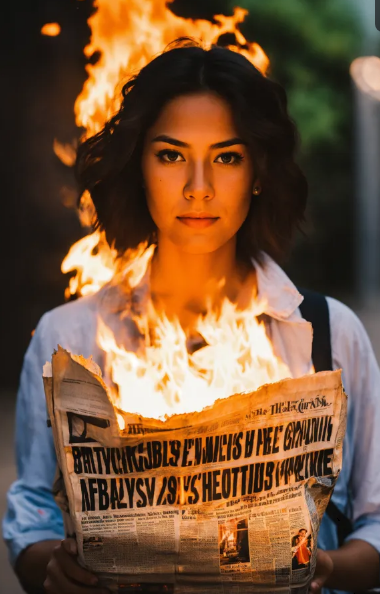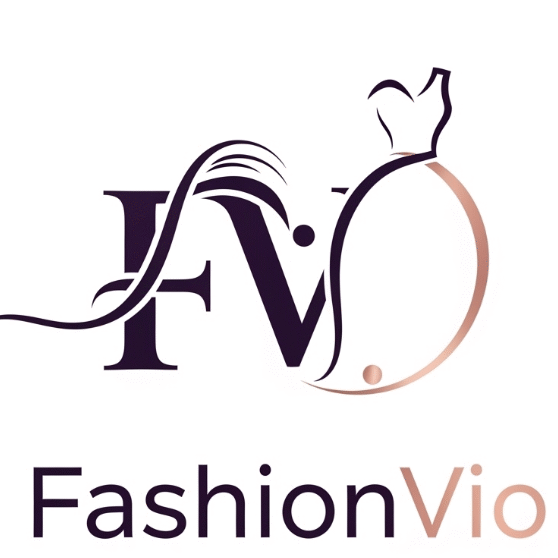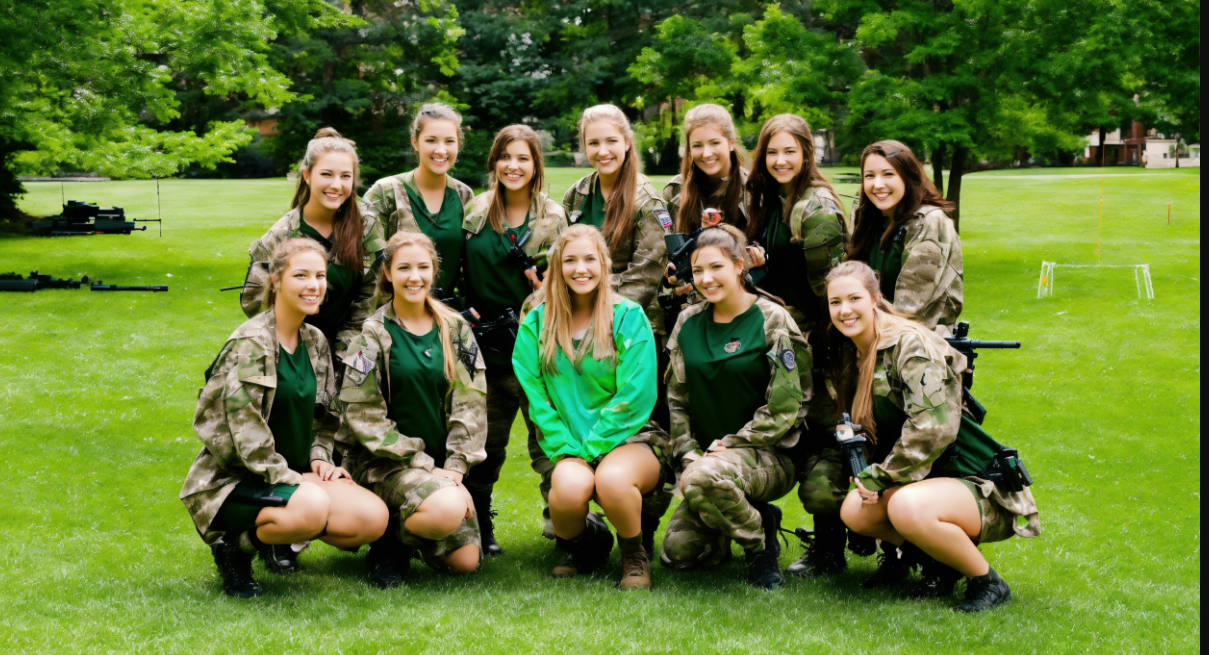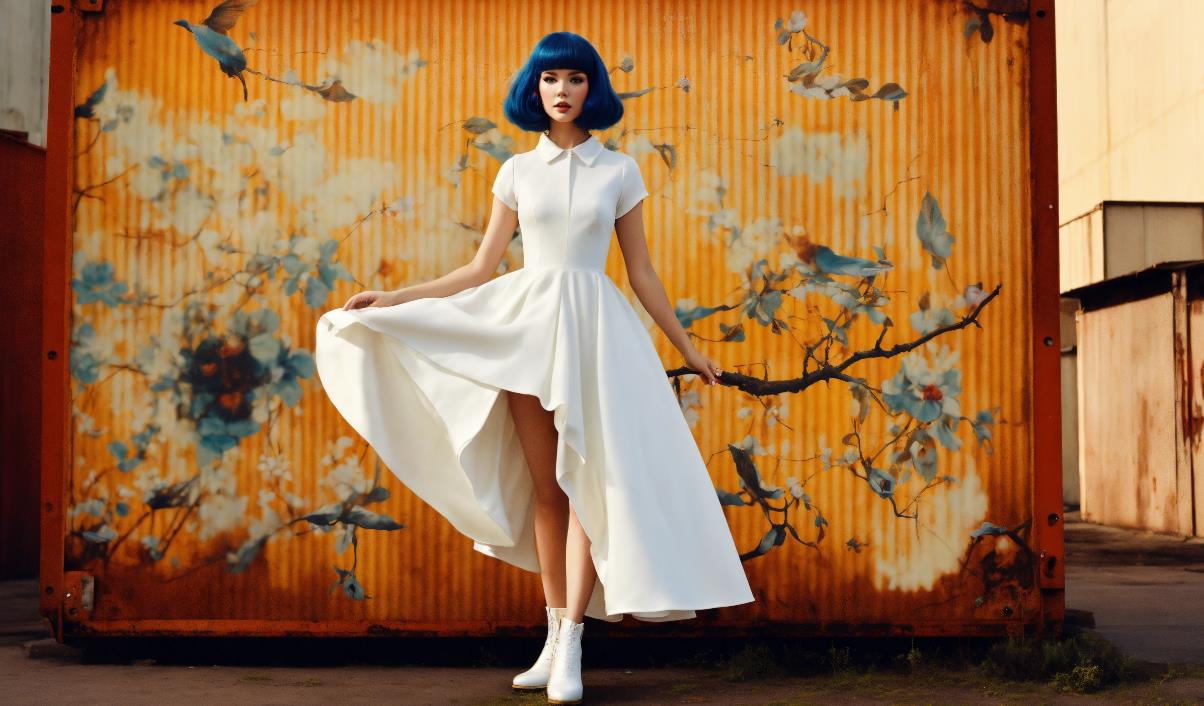A college major dress to Impress Outfit Ideas refers to the clothing style chosen by students to reflect the norms, values, and expectations of their academic field. Whether it’s polished tailoring for business majors or functional wear for engineering students, your outfit can signal your understanding of the culture and professionalism of your discipline. It’s not just about looking good—it’s about aligning your appearance with your academic identity and future career path.
Style speaks louder than words, especially in environments where first impressions matter. Standing out for the right reasons starts with showing that you care—about your major, your presence, and your future. A curated outfit can act like visual shorthand for ambition, confidence, and competence. Dressing the part sets you apart. If you’re unsure how to style your look for class, our College Major Dress to Impress Outfit Ideas offer plenty of inspiration.
These College Major Dress to Impress Outfit Ideas are crafted to blend fashion with purpose. Whether you’re in the lab, studio, or lecture hall, these outfits give you a confident edge while staying true to the standards of your chosen field. These College Major Dress to Impress Outfit Ideas help students feel confident and professional in any academic setting.
Business Administration: The Strategic Power Player

Students need wardrobes that communicate competence and readiness for the corporate world. The classic power suit has evolved into something more dynamic and approachable. If you’re unsure how to style your look for class, our College Major Dress to Impress Outfit Ideas offer plenty of inspiration.
Key pieces for Business Administration majors:
- A well-tailored blazer in navy or charcoal (invest in quality here)
- Crisp button-down shirts or blouses in solid colors
- Tailored trousers or knee-length skirts
- One high-quality leather portfolio or laptop bag
Styling tips: Layer a colorful blouse under your blazer to add personality to an otherwise conservative outfit. For men, a subtle pocket square can add distinction without being flashy. Wrinkle-resistant fabrics are worth the investment for those long days of classes followed by networking events.
“Dressing like the role you want, not the role you have, helps business students mentally prepare for their future careers while making positive impressions on potential employers.” – Dr. Emma Rodriguez, Business Fashion Psychology
Consider building a capsule wardrobe with pieces that mix and match easily, focusing on quality over quantity. This approach to career-ready looks creates a foundation for professional success. From business to fine arts, our College Major Dress to Impress Outfit Ideas cater to every major with unique style tips.
Computer Science: Tech-Savvy Comfort

CS majors often balance long coding sessions with presentations and hackathons, requiring a smart casual style that works across these varied settings.
Tech-friendly fashion essentials:
- Premium dark jeans without distressing
- Solid or subtly patterned button-downs
- Quality hoodies or cardigans (avoid overly casual graphics)
- Comfortable yet stylish sneakers
Tech companies typically embrace a more relaxed dress code, but as a student, you’ll want to strike a balance between comfort and professionalism. Opt for wrinkle-resistant fabrics that look put-together even after hours in the computer lab.
Accessories that work: A quality laptop backpack with ergonomic features shows both practicality and attention to detail. Consider tech-inspired accessories like smartwatches or subtle circuit-inspired jewelry for a personal touch that connects to your field.
For presentations or career fairs, elevate your look with a blazer over your usual attire—this simple addition transforms your everyday look into a professional outfit suitable for impressing potential employers.
Engineering: Functional Precision

These students often navigate between classroom theory, hands-on labs, and professional presentations. Your wardrobe should be equally versatile, prioritizing functional fashion without sacrificing style.
Engineering wardrobe essentials:
- Durable chinos or dark jeans that meet lab safety requirements
- Layerable tops that work under lab coats
- Closed-toe shoes (leather or sturdy sneakers)
- A tailored blazer for presentations
| Engineering Discipline | Special Considerations |
|---|---|
| Mechanical/Civil | Steel-toe options for site visits; layers for indoor/outdoor transitions |
| Electrical | Anti-static footwear; avoiding loose accessories |
| Chemical | Chemical-resistant fabrics; easy-to-clean materials |
Styling tip: Incorporate subtle nods to your engineering specialty—perhaps geometric patterns for architects or circuit-inspired accessories for electrical engineers—to showcase your passion while maintaining professionalism.
Remember that engineering often involves physical activity and varying environments. Invest in quality pieces that can withstand the demands of your specific discipline while still looking sharp for important presentations or site visits. The blog post breaks down the best College Major Dress to Impress Outfit Ideas for students looking to elevate their wardrobe.
Fine Arts: Creative Expression With Purpose

Arts majors have unique freedom to showcase artistic expression through their clothing choices, but must also consider the practical demands of studio work and the expectations at gallery openings.
Studio-to-gallery wardrobe:
- Premium dark jeans or comfortable pants that allow movement
- Layerable tops that can be adjusted for messy work
- Stylish yet practical aprons or smocks for protection
- Statement accessories that showcase your artistic sensibility
Medium-specific considerations: Painters might prefer washable fabrics and avoid dangling sleeves, while sculptors need durable clothing that allows free movement. Digital artists can embrace more delicate pieces but should consider comfort for long hours at the computer.
Create an outfit formula that allows you to quickly transform from creative work to presentations—perhaps a simple black ensemble that serves as a canvas for a statement jacket or unique accessories that express your artistic vision.
“Your clothing is often the first gallery where you exhibit your artistic sensibility. Make it intentional.” – Professor James Chen, Visual Arts Department
Psychology: Approachable Professionalism

These students straddle the worlds of rigorous academia and human connection. Your wardrobe should project both credibility and approachability—a balance that will serve you well in research settings, observations, and eventual clinical work. You’ll love these creative and practical College Major Dress to Impress Outfit Ideas that suit every classroom and career path.
Psychology major essentials:
- Neutral-toned separates that can be mixed and matched
- Cardigans or blazers that soften a professional look
- Comfortable yet polished footwear for observation days
- Minimal, non-distracting accessories
Color psychology in action: Consider incorporating calming blues and greens or grounding earth tones that put others at ease. Avoid overly bright or distracting patterns that might interfere with establishing rapport.
For research presentations, lean toward the more formal end of your wardrobe spectrum. For observation days or potential client interactions, choose outfits that won’t distract or create barriers to connection. This balance of professional confidence and accessibility will serve you throughout your psychology career.
Political Science: Diplomatic Influence

These students should develop wardrobes that project authority while remaining appropriate for various political environments. Your clothing choices should communicate respect for traditions while still allowing your unique perspective to shine through.
Diplomatic wardrobe fundamentals:
- Well-tailored blazers or suits in conservative colors
- Quality button-down shirts or blouses
- Structured dresses with appropriate hemlines
- Professional footwear that allows comfortable standing during long events
Power dressing in political science isn’t just about formality—it’s about understanding the subtle signals your clothing sends. Consider how different cultural and political contexts might interpret your clothing choices, especially for international relations specializations.
Styling tip: Use accessories strategically to add personality to conservative outfits—perhaps a tie in your school colors or a subtle brooch that references your political interests without being overly partisan.
For debate competitions and model UN events, dressing slightly more formally than required demonstrates your seriousness and respect for the proceedings—a principle that applies throughout the political realm.
Biology: Laboratory Elegance

It majors face unique challenges—needing clothes that can withstand laboratory conditions while still looking professional for presentations and fieldwork. Safety comes first, but style doesn’t need to be sacrificed. Use these College Major Dress to Impress Outfit Ideas to build a college wardrobe that’s stylish and field-appropriate.
Lab-ready wardrobe:
- Closed-toe, non-absorbent shoes (leather or synthetic)
- Laboratory-appropriate pants or longer skirts
- Button-downs or blouses that can be tucked in
- Cardigans or blazers that can be easily removed before lab work
Biology students should invest in washable, durable fabrics that can stand up to repeated cleaning. Consider having designated “lab day” clothing that meets safety requirements but still looks put-together.
Quick transformation tip: Keep a blazer and professional accessories in your backpack to quickly transform from lab-appropriate attire to presentation-ready professionalism in minutes.
For fieldwork, functional clothing with UV protection, moisture-wicking properties, and plenty of pockets becomes essential while still maintaining a professional appearance when meeting with research teams or community members.
Journalism: Deadline-Ready Versatility

These students need wardrobes as adaptable as their changing assignments—ready for anything from courthouse reporting to on-camera interviews with minimal notice.
Camera-ready outfits essentials:
- Solid-colored tops that photograph well (avoid busy patterns)
- Layerable pieces for unpredictable conditions
- Comfortable shoes you can stand or walk in for hours
- All-weather outer layer that looks professional
| Journalism Setting | Outfit Considerations |
|---|---|
| On-camera reporting | Solid colors, minimal jewelry, non-distracting necklines |
| Print journalism | Comfortable yet professional attire for long interviews |
| Photojournalism | Functional clothing with pockets, weather-appropriate layers |
Styling tip: Build a collection of solid-colored tops in flattering shades that work well on camera. Avoid white (too bright) and black (too severe) for video work, instead opting for navy, burgundy, forest green, or dusty blue.
Journalists should also consider cultural context when dressing for assignments—having versatile pieces that can be made more conservative or casual depending on the environment shows respect and professionalism.
Education: Engaging Authority

It needs to dress for the dual challenge of commanding respect from students while maintaining comfort for active teaching days. Your wardrobe should project authority while allowing the movement teaching requires.
Classroom appropriate attire includes:
- Comfortable yet professional pants or skirts
- Blouses or button-downs that allow movement
- Cardigans or blazers that can be added or removed as needed
- Supportive, quiet footwear (avoid noisy heels)
Grade-level considerations: Early childhood educators might opt for more casual, washable clothing that allows floor sitting, while high school teachers typically dress more formally to establish authority.
Subject-specific adaptations also matter—art teachers need stain-resistant options, while physical education teachers require professional athletic wear. The key is finding the right balance between approachability and authority for your specific teaching context.
“How you dress as a teacher sets the tone for your classroom. Students notice everything about their teachers, including how seriously they take their professional appearance.” – Dr. Marcus Williams, Education Department Chair
Marketing: Trend-Savvy Professional

These students should demonstrate awareness of current trends while maintaining professionalism—after all, your personal presentation is a form of marketing itself.
Trend-savvy professional essentials:
- Contemporary cut blazers or jackets
- Fashion-forward basics in current colors
- Statement accessories that showcase personality
- Polished shoes in modern styles
Marketing majors can take more fashion risks than some other disciplines, but should balance trendy pieces with professional staples. Consider incorporating this season’s color trends through accessories while keeping core pieces timeless.
Industry-specific considerations: Agency settings typically allow more creative expression than corporate marketing departments. Research your target employers and dress accordingly for internship interviews and networking events.
Creating a consistent personal style that becomes part of your personal brand can be especially valuable in marketing—consider what visual signature might make you memorable while remaining appropriate for professional settings.
Architecture: Structural Sophistication

These students should develop wardrobes that work for studio all-nighters, client presentations, and construction site visits—a challenging combination that requires thoughtful planning.
Architectural wardrobe foundation:
- Dark, quality jeans or trousers that can handle studio work
- Layerable tops for temperature-controlled environments
- Structured jackets that add professionalism instantly
- Comfortable yet stylish footwear suitable for site visits
Architecture students often wear predominantly black—a tradition in the field—but consider introducing texture and subtle pattern to avoid looking flat. Geometric accessories or architectural details on clothing can subtly reference your passion.
Practical consideration: Architecture students should invest in a professional messenger bag or portfolio case large enough for drawings yet stylish enough for client meetings—a functional necessity that also serves as a style statement.
For site visits, have closed-toe shoes with appropriate tread and protection while still maintaining a professional appearance—there are now many stylish options that meet safety requirements.
Environmental Science: Sustainable Style

It has a unique opportunity to align their dress to impress choices with their values through sustainable fashion and eco-chic fashion practices.
Sustainable wardrobe essentials:
- Ethically-produced basics in natural fibers
- Versatile pieces that reduce the need for excess consumption
- Durable outdoor wear for fieldwork that will last years
- Secondhand or vintage professional pieces
Environmental scientists often move between fieldwork, laboratory settings, and presentations. Create a core wardrobe of items that can be dressed up or down depending on the day’s activities.
Styling tip: When purchasing new items, research brands committed to environmental responsibility—many now offer professional attire made from recycled materials or produced through low-impact methods.
For presentations or conferences, showcase how professional style can align with environmental values through thoughtfully sourced clothing and minimal waste. This authentic expression of your values through your wardrobe choices demonstrates commitment to your field.
Nursing: Practical Confidence

These students navigate clinical rotations, classes, and presentations—requiring a wardrobe that can transition between these varied environments while meeting strict healthcare guidelines.
Beyond scrubs essentials:
- Washable, wrinkle-resistant business casual separates
- Comfortable, supportive, closed-toe shoes
- Simple, hygienic accessories (minimal jewelry, short nails)
- Cardigans or jackets that can be easily sanitized
Clinical rotation considerations: Research your clinical placement dress codes in advance—some facilities have specific color requirements for scrubs or additional guidelines about appearance. Having appropriate options ready shows professionalism and preparedness.
For presentations or simulation labs, business casual attire that still allows movement demonstrates your readiness to transition between clinical and professional settings. Consider investing in quality pieces with antimicrobial properties designed specifically for healthcare environments.
Economics: Data-Driven Precision

It should develop wardrobes that work across academic settings while preparing for the formal expectations of financial institutions and consulting firms.
Economics wardrobe investments:
- At least one impeccably tailored suit for presentations and interviews
- Quality dress shirts or blouses in traditional colors
- Conservative yet contemporary accessories
- Professional leather portfolio and quality pen
While economics embraces traditional business attire, subtle contemporary updates keep your look fresh rather than dated. Consider modern cuts and fits while maintaining appropriate color choices and styles.
Budget strategy: Apply economic principles to your wardrobe by investing strategically in high-quality foundation pieces while being more budget-conscious with trend items. This approach to internship wardrobe building creates maximum versatility with minimum expenditure.
For presentations or competitions, dress slightly more formally than required—this demonstrates seriousness and attention to detail that economics professionals value.
Theater Arts: Controlled Expression

It balances practical backstage work with the need to make strong impressions at auditions and networking events. Your wardrobe should showcase your creative personality while still meeting industry expectations.
Theater wardrobe essentials:
- Comfortable all-black attire for backstage work
- Versatile pieces that work for movement classes
- Statement items that showcase personality for networking
- At least one audition-ready outfit that flatters and photographs well
Theater students should consider building a foundation of practical blacks for production work, then adding pieces that express their artistic sensibility for events and networking opportunities.
Audition attire tip: Research typical casting expectations for your specialty—musical theater, classical acting, and experimental performance all have different unwritten dress codes. Your audition outfit should suggest your casting potential while allowing comfortable movement.
Remember that in theater, your appearance is part of your creative toolkit—use it intentionally to communicate who you are as an artist while still respecting the practical demands of the craft.
Communications: Adaptable Impressions

It prepares for diverse career paths from public relations to broadcasting, requiring wardrobes with similar versatility. Your camera-ready outfits should work across multiple platforms and contexts.
Communications essentials:
- Solid-colored tops in flattering shades that work on camera
- Structured jackets that add instant professionalism
- Versatile dresses or slacks for varied environments
- Accessories that add interest without distraction
Communications students should practice maintaining consistent personal style across platforms—your in-person presentation should align with your digital presence, creating a cohesive personal brand.
Broadcast considerations: For on-camera work, avoid small patterns that can create moiré effects, extremely bright colors, and distracting jewelry. Instead, opt for solid mid-tones that complement your skin tone and simple, quality accessories.
For agency visits or informational interviews, research the company culture and dress accordingly—communications environments range from corporate conservative to creative casual. These College Major Dress to Impress Outfit Ideas help students feel confident and professional in any academic setting.
Criminal Justice: Authoritative Balance

These students prepare for environments where appearance directly connects to authority and credibility. Your wardrobe should communicate respect for tradition while remaining practical for varied settings.
Criminal justice wardrobe foundation:
- Conservative suits or separates in navy, black, or gray
- Crisp, well-pressed shirts or blouses
- Minimal, professional accessories
- Polished, comfortable shoes for potentially long days
For courtroom observations or law enforcement shadowing, err on the side of formality—showing respect for these institutions through your appearance demonstrates understanding of their cultures.
Practical field considerations: If your program includes physical training components, invest in professional-looking athletic wear that transitions well to classroom settings. Consider layers that allow you to maintain a put-together appearance throughout varied daily activities.
“In criminal justice professions, your appearance directly impacts how witnesses, jurors, and colleagues perceive your credibility. Developing professional habits now pays dividends throughout your career.” – Former Police Chief Robert Martinez
Culinary Arts: Practiced Refinement

Arts students need wardrobes that work beyond kitchen whites, especially for front-of-house training, presentations, and industry events where you represent your culinary point of view.
Beyond the kitchen essentials:
- Professional black pants that transition from kitchen to dining room
- Crisp button-downs or chef-inspired casual wear
- Comfortable, non-slip shoes that look presentable
- Subtle accessories that reference culinary interests
For food presentations or competitions, consider how your appearance complements your culinary style—perhaps modern minimalist for contemporary cuisine or touches of traditional elements for classical cooking.
Industry networking tip: Research the style of chefs or culinary professionals you admire and identify elements you might incorporate into your own professional presentation. Developing a signature style helps you stand out in competitive culinary environments.
Remember that in culinary arts, attention to detail in your appearance suggests similar precision in your cooking—clean, thoughtful presentation matters both on the plate and in your personal style.
Budget-Friendly Implementation Strategies
Building a major-appropriate wardrobe doesn’t require breaking the bank. Strategic shopping and wardrobe planning can create professional college outfits on a student budget.
Smart shopping approaches:
- Thrift or consignment stores near business districts
- End-of-season sales for classic pieces
- Student discounts at major retailers
- Clothing swaps with peers in your major
Start with fundamental pieces that work across multiple settings, then gradually add field-specific items as your budget allows. Prioritize fit and quality for items you’ll wear frequently, like blazers or presentation attire.
Case Study: Emma’s Capsule Wardrobe Emma, a political science major, built her professional wardrobe over four semesters by:
- Starting with two quality blazers, three button-downs, two pairs of dress pants, and one skirt
- Adding accessories each month to create different looks
- Investing in one quality piece per semester
- Thrifting supplementary items
By graduation, she had a complete professional wardrobe for under $500 that saw her through internship interviews, presentations, and networking events.
Conclusion: Dressing for Success Across Disciplines
Your college major not only shapes your education but influences your professional attire needs as well. The right College Major Dress to Impress Outfit Ideas balance field expectations with personal style, creating a wardrobe that supports your academic and career goals.
Remember that developing your professional wardrobe is a process—start with versatile foundation pieces and build gradually as you refine your understanding of your field’s culture and your personal style preferences. The confidence that comes from knowing you’re appropriately dressed allows you to focus on what really matters: your ideas, connections, and growth.
Whether you’re presenting research findings, attending networking events, or simply making everyday impressions on professors and peers, thoughtful dress to impress choices support your professional development. Your clothes can serve as both armor and introduction—helping you feel confident while communicating your seriousness about your chosen path.
FAQs About College Major Dress to Impress
Can I build a professional wardrobe on a student budget? Absolutely! Start with versatile foundation pieces, shop strategically at thrift stores or during sales, and build gradually. Prioritize quality over quantity for key pieces like blazers and shoes.
How should I dress differently for presentations versus everyday classes? For presentations, elevate your usual style—perhaps adding a blazer, selecting more formal footwear, or incorporating more structured pieces. Your goal is to communicate preparation and professionalism.
What versatile pieces work across multiple majors and settings? A well-fitted blazer, dark wash jeans without distressing, crisp button-downs or blouses, and clean, contemporary shoes create a foundation that works across many disciplines.
How can I express my personality while maintaining professionalism? Accessories, subtle pattern mixing, thoughtful color choices, and modern interpretations of classic pieces all allow personal expression while keeping within professional boundaries. Consider your field’s tolerance for creative expression and adjust accordingly.
What’s appropriate attire for informational interviews in my field? Research typical dress codes in your target industry, then dress slightly more formally than the everyday standard. This demonstrates respect and seriousness without seeming out of touch with the culture.
How should I adapt my professional wardrobe for different seasons? Invest in layering pieces that allow you to adjust to temperature changes while maintaining a consistent level of professionalism. Consider seasonally appropriate fabrics and colors while keeping your core professional pieces consistent.




